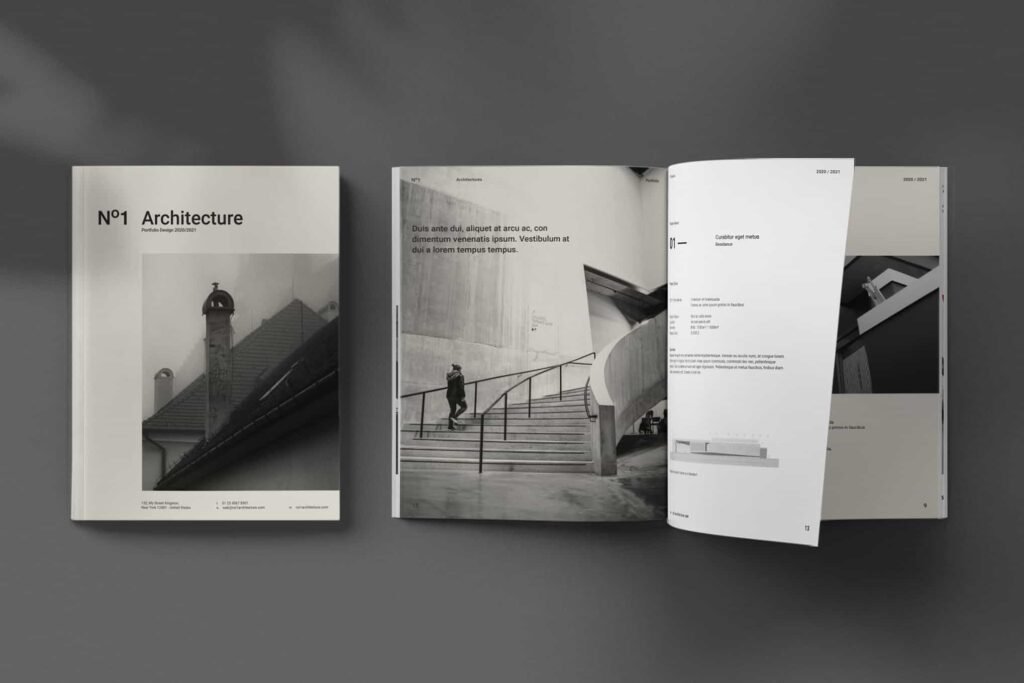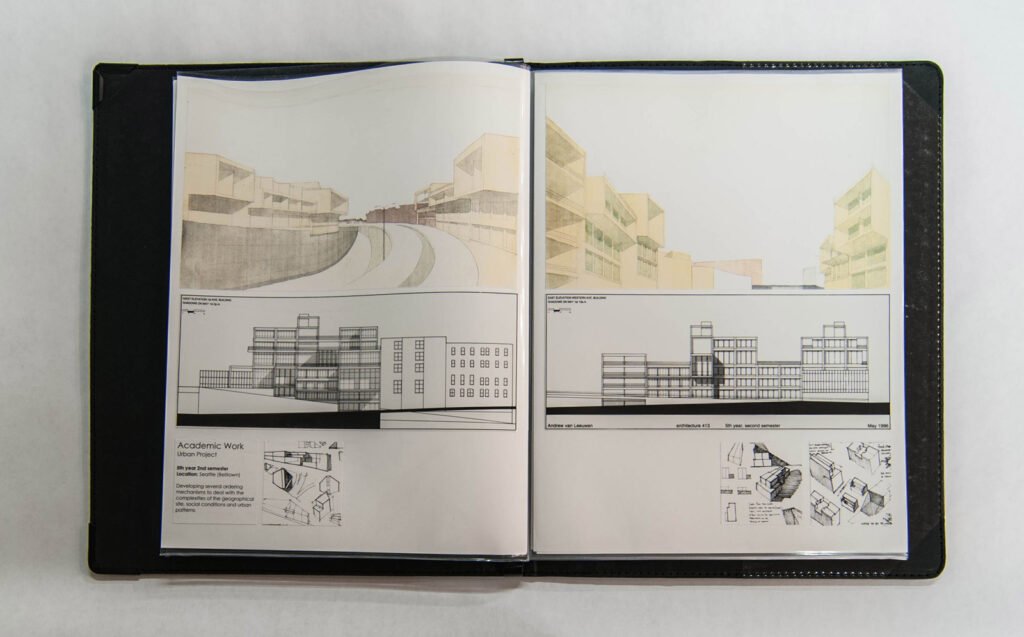What is an architectural portfolio?
The architectural portfolio is a thoughtful collection of work done by an architect or a student of architecture. A portfolio demonstrates your skills, design process, artistic insight, and personal interests. In simple words, your portfolio will represent you and your personality as a designer.
Before starting to make your portfolio, you first have to identify the purpose of the portfolio. You might need a portfolio for your postgraduate admission or your first job application after graduation. The design of the portfolio will change according to its purpose.
The portfolio is a very crucial tool for securing your first job and gaining admission to postgraduate programs. It is what sets you apart from other competitors. You should focus more on the aspects that companies expect to see in a portfolio and ensure your portfolio aligns with the themes of the institutions.
Why is a portfolio important?
The portfolio is the tool by which a recruiter can evaluate you as a designer. They can learn about your work style, personality, and more. Then they evaluate you, and if you match their institution or office, they recruit you. So, it is very important for every architect.
The portfolio is not only important for a job or higher study; it is also important for attracting new clients. Because a new client probably does not know anything about you and your style. So, the portfolio is the way by which they can see your previous work and decide whether to hire you for their project.
This means the portfolio acts as a bridge between you and the institutions, firms, or clients, making it an integral part of your career advancement. A good portfolio can further enhance your career.
The portfolio is also important for establishing a personal brand and making a personal identity in the field of architecture. It is also a great tool for spreading your thoughts and philosophy among others. Because a portfolio not only showcases your work but also showcases you as a designer, your thoughts, your ambitions, and you as a person.

Do you need an online portfolio?
Portfolios can be in both physical and online formats. Nowadays, an online portfolio is not just an option; it is a necessity. Now we have the same amount of presence online as in our physical world. So, it becomes essential to demonstrate our work and expertise in architecture online for our careers.
An online portfolio is very useful for quickly sharing your experiences. It is also easy to access for others. By creating an online portfolio, we expose our work to the whole world, giving us more opportunities. An online copy is easy to edit and update with new documents. Additionally, an online portfolio presents you more professionally and richly to viewers.
You can use Behance-like tools for online showcasing of your work or create your portfolio website. Both work very well. You can choose one as you need. But it is always good to have your website for furthering your career and helping market your skills and expertise.
Tips for a good portfolio:
It is crucial to build a good and purpose-centric portfolio. A good portfolio does not just showcase the final output of your designs. It should also demonstrate your working style, thoughts, critical thinking ability, and more, as these aspects differentiate you from other designers.
That does not mean that the final output or rendered images are valueless; they are also important. But as mentioned at the beginning of the article, the portfolio has to be purpose-centric. If you are creating a portfolio for a renderer or visualizer job, graphical skills are much more important than the design process. The portfolio should demonstrate how stunning images you can generate.
Here are some specific tips for creating a good portfolio:

Create your style:
It is important to create a consistent style in your portfolio as a designer. It shows your aesthetic insight and makes you identifiable to viewers. When a recruiter views your portfolio, if they can identify you by your style, it increases the chances of recruitment. Your style sets you apart from the competition, so try to establish it in your portfolio.
Explain the design process:
Architecture is not just about creating stunning images of a project; it is about the process. Describe the process you follow to design your projects in your portfolio. It should demonstrate how you interact with a project, identify and solve problems, and delve deep into the process. These aspects reflect your proficiency as a designer.
Recruiters often want to know about your process and thinking. Including the design process in your portfolio advances it a step further. So, talk about your design process in your portfolio.
Show your critical thinking ability:
As an architect, the skill of critical thinking is crucial. Try to think from a recruiter’s perspective and demonstrate how you can add a new dimension to their office or institution. Showing your critical thinking ability in your portfolio adds value to you as a candidate.
Demonstrate your graphical fluency:
Graphical representation is another important skill for architects. Try to explain your ideas graphically rather than with text in your portfolio. Make graphical representations of existing site conditions, conceptual sketches, and connections between the community and your designs. These demonstrate your visual taste, aesthetic insight, and graphical skills, which are in high demand in the job market.
Maintain visual consistency:
Try to maintain visual consistency throughout your portfolio. Choose a theme and maintain it consistently. This makes your portfolio more elegant and visually appealing. A visually consistent portfolio effectively conveys the message you want to convey.
On the other hand, a visually inconsistent portfolio demonstrates a lack of control over graphical presentation and decreases visual appeal, sometimes becoming chaotic for viewers.
Make the portfolio a storybook:
The main difference between good and bad architecture is that good architecture tells a good story, which is contextual. Your portfolio should contain a story to make it compelling. Make your portfolio tell the viewers a complete story—your story, your philosophy, or a story of awareness.
Show hand skills: For beginners, it is great to demonstrate hand skills like drafting, drawings, and physical model making in their portfolio. Firms and institutions do not always expect expertise in digital media from beginners because schools mostly focus on hand skills. So, including pictures of hand drafting, drawings, and physical models shows your dedication to the field.
Versatility:
Architecture is a versatile field, and it is beneficial to showcase skills beyond architecture in your portfolio. Explore skills like photography, sculpting, etc., and include at least one in your portfolio. This adds another dimension to your portfolio, showing your hobbies and interests and increasing your value in the field
